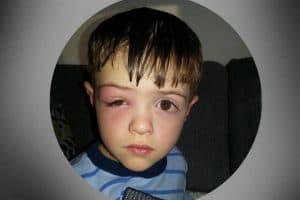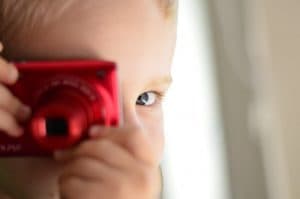2021 Update: Autism (ASD) and Vision
The latest information on autism (ASD) and how optometrists can provide life-changing interventions. Studies of eye clinic records suggest that children with autism (ASD) and
Read More2021 Update: Vision Therapy for Adults
Vision therapy can be more effective for adult patients, as they are typically more motivated in therapy.
Once an adult starts to notice the results of vision therapy with their own eyes they realize how beneficial it can be for them, motivating them to improve even further.
What Are the Benefits of Vision Therapy?
Vision therapy is a structured program provided by highly trained and experienced optometrists. If you are considering vision therapy, it is important to understand the differences between programs offered by orthotists, occupational therapists and other healthcare practitioners.
Read MoreVision Therapy for Eye Turns: Success Stories
Personal stories from parents of children diagnosed with an eye turn (strabismus). *Names have been changed for privacy protection. Click here for a list of
Read MoreVision Therapy for Adults
Vision therapy is a proven and effective solution for adults as well as children.
Do you feel like your work performance is impacted by headaches or eye strain?
Are you finding it stressful to meet deadlines?
Vision therapy is a remarkably effective program that improves vision skills to achieve more comfortable vision for reading and computer use – enhancing your workplace productivity.
Bifocals for Lazy Eye
What are bifocals? Bifocals are glasses that contain two lens prescriptions, one for near vision and one for distance vision. The lens powers are usually
Read MoreLazy Eye FAQs
These are the 12 most frequent questions asked to vision therapy eye doctors on lazy eye. You may easily find answers to your questions below. If you still have questions, contact your nearest eye doctor experienced in children’s vision, lazy eyes and vision therapy.
Read MoreUntil What Age Can a Lazy Eye Be Treated?
Recent research from the National Eye Institute (NEI) shows that a lazy eye can be successfully treated at least up to age 17. Lazy eye
Read MoreA Guide to Eye Infections
Up to 1 in 8 of all children will have an eye infection each year. Parents should be aware of the symptoms of an eye infection to enable prompt identification and treatment. Eye infections can be serious and may cause permanent vision loss. Effective treatment is always needed, especially when bacteria, viruses, or fungi invade the eye or the surrounding areas. The most common eye infections that affect children are called Viral and Bacterial Conjunctivitis— both highly contagious.
Read More5 Essential Facts About Traumatic Brain Injuries
Have you suffered a brain injury? Here are 5 facts that are essential to know: A traumatic brain injury (TBI) is an injury to the
Read MoreWhat Is Lazy Eye?
According to research, amblyopia affects up to 1 in 33 of the population— this means up to 10 million people in the U.S. may have a lazy eye. Amblyopia, commonly known as a “lazy eye”, is a neuro-developmental vision condition that begins in early childhood and develops when one eye is unable to achieve normal visual acuity, causing blurry vision in the affected eye, even with corrective eyewear. The condition also commonly presents with poor depth perception, and reading difficulties.
Read MoreHow Is Lazy Eye Treated?
A variety of treatment options have been shown to treat lazy eye – the aim is to strengthen the eye-brain connections necessary for binocular vision. Traditionally, it has been thought that lazy eye treatment should begin before a child reaches around eight years old, however recent research shows that even after this age, lazy eye can be successfully treated. That being said, the earlier the condition is diagnosed, the better the treatment outcome will be.
Read MoreWhat Is Strabismus (Crossed-Eyes)?
Up to 5% of the population has strabismus, or an eye turn. Strabismus occurs when the two eyes are unable to maintain proper alignment and focus together on an object – one eye looks directly at the object, while the other eye points in a different direction.
Read More












